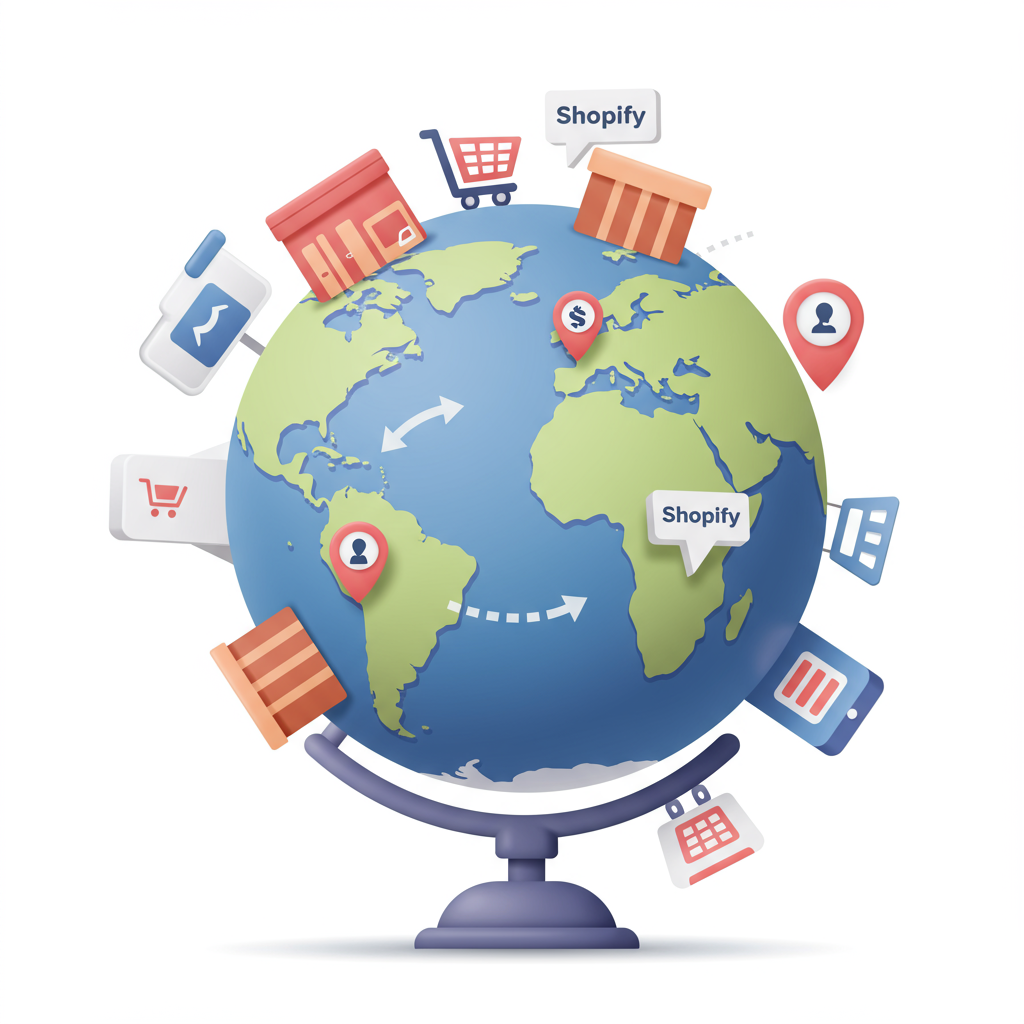A Comprehensive Guide to Expanding Your E-commerce Business Worldwide
As a Shopify merchant, you’ve likely experienced the thrill of a sale. But imagine that sale coming from halfway across the world! The global marketplace is vast, and with the right strategy, your Shopify store can tap into an incredible new customer base.
I’ve seen firsthand how intimidating international shipping can seem. Customs forms, duties, taxes, different carriers, varying delivery times – it’s enough to make anyone pause.
However, I’m here to tell you that with a clear plan and the powerful tools Shopify provides, expanding your reach globally is not only achievable but also incredibly rewarding.
The opportunity is immense. Customers worldwide are looking for unique products, and your store could be their next favorite destination. Ignoring international markets means leaving significant revenue on the table.
But let’s be honest, it’s not as simple as just ticking a box. There are complexities that need careful consideration to ensure a smooth experience for both you and your international customers.
The primary challenges I’ve encountered include navigating customs regulations, managing shipping costs, handling duties and taxes, ensuring reliable delivery, and streamlining international returns.
My first piece of advice is always to start with thorough market research. Don’t just open up shipping to every country immediately.
Identify which countries show demand for your products, research their import regulations, and understand the competitive landscape. Tools like Google Analytics can show you where your existing international traffic is coming from.
Next, you’ll need to choose your shipping carriers. This is a critical decision that impacts cost, speed, and reliability.
You’ll likely consider major international carriers like DHL, FedEx, and UPS, which offer comprehensive tracking and faster delivery times.
Don’t overlook national postal services (like USPS for the US, Royal Mail for the UK) for more economical, albeit sometimes slower, options, especially for lighter, less urgent items.
Once you have an idea of your target markets and preferred carriers, it’s time to set up your shipping zones in Shopify. This is where you define which countries or regions you’ll ship to.
I recommend grouping countries with similar shipping costs and customs requirements into specific zones. This simplifies rate management significantly.
Now, let’s talk about shipping rates. Shopify offers several options: flat rates, price-based rates, weight-based rates, and carrier-calculated rates.
For international orders, I generally lean towards carrier-calculated rates. This ensures your customers pay the actual shipping cost, preventing you from overcharging or undercharging.
If carrier-calculated rates aren’t feasible, consider tiered weight-based or price-based rates, but always build in a buffer for unexpected costs.
Perhaps the most confusing aspect for many merchants is handling duties and taxes. This is where the distinction between DDU (Delivery Duty Unpaid) and DDP (Delivery Duty Paid) becomes crucial.
With DDU, the customer is responsible for paying any customs duties, taxes, and fees upon delivery. This can lead to unexpected charges for the customer, potentially causing frustration and even refusal of delivery.
My strong recommendation is to aim for DDP whenever possible. This means you, the merchant, collect the duties and taxes at the time of purchase, ensuring a transparent and seamless experience for your customer.
Shopify apps and integrations can help you calculate and collect these DDP charges at checkout, making the process much smoother for both parties.
Accurate customs documentation is non-negotiable. You’ll need a commercial invoice, a packing list, and potentially a customs declaration form.
Ensure you accurately describe your products and include the correct Harmonized System (HS) codes. These codes classify your products for customs purposes and are vital for smooth clearance.
Packaging also plays a role. Use sturdy, lightweight materials to protect your products during transit while minimizing shipping costs. Clearly label packages with all necessary customs information.
Providing tracking information is paramount for international orders. Customers want to know where their package is at all times. Shopify’s built-in tracking features, combined with carrier tracking, are invaluable here.
Proactive communication about shipping delays or customs issues can significantly improve customer satisfaction, even when things don’t go perfectly.
Develop a clear and concise international returns policy. This can be complex due to customs and shipping costs, so be transparent about who bears the cost of return shipping and any potential re-import duties.
Consider localization. Offering your store in multiple languages or displaying prices in local currencies can significantly enhance the customer experience and build trust.
Finally, don’t forget about marketing. Once your shipping strategy is in place, tailor your marketing efforts to your target international markets. Use geo-targeting in your ads to reach the right audience.
Shopify’s app store is a treasure trove of tools that can assist with currency conversion, duty calculation, shipping label generation, and more. Don’t hesitate to explore them.
Expanding internationally is a journey, not a sprint. Start with a few key markets, learn from your experiences, and gradually expand. The world is waiting for your products!
What are your thoughts on this comprehensive guide to Shopify international shipping? I’d love to hear your insights and any challenges you’ve faced.






